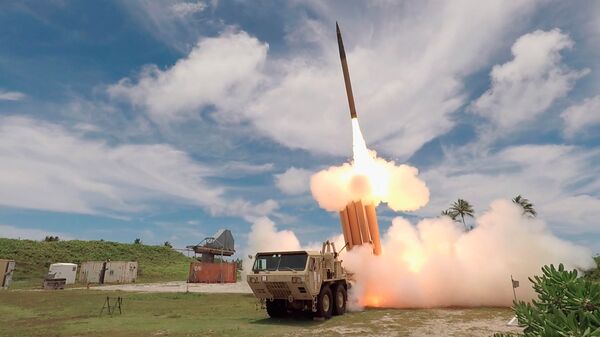
South Korea approved the deployment of the THAAD system at Seongju base. The picture shows a THAAD interceptor launching from the Republic of the Marshall Islands during a flight test in 2019. (US Missile Defense Agency)
South Korea's Ministry of Environment (MoE) has completed an environmental impact assessment (EIA) of the US Army's Terminal High Altitude Area Defense (THAAD) system temporarily deployed at the US military base in Seongju – nearly 215 km southeast of Seoul.
According to a press release by South Korea's Ministry of National Defense (MND) on 21 June, the MoE and the MND approved the full-fledged deployment of THAAD at Seongju base.
“As the MoE and the MND have completed the environmental impact assessment of Seongju base in co-operation, we will closely co-operate with the US to faithfully reflect the consultation opinions and proceed with the [THAAD deployment] project,” the MND said.
In July 2016 South Korea and the US agreed to deploy the US Army's THAAD system in South Korea to counter the growing threat posed by North Korea's military provocations.
In early March 2017 the first elements of the THAAD battery began arriving in South Korea with two truck-mounted launchers deployed at Seongju.
However, the deployment of the launchers became controversial after then South Korean President Moon Jae-in accused the MND of having “intentionally” failed to report THAAD's arrival in the country.
There were also concerns that an EIA of the system was not conducted. In September 2017 the MoE in Seoul gave its consent for the temporary deployment of the launchers after conducting a small-scale assessment.
The locals also feared high electromagnetic wave (EMW) exposure from the THAAD base after which the MoE initiated a full-scale EIA.
Looking to read the full article?
Gain unlimited access to Janes news and more...







